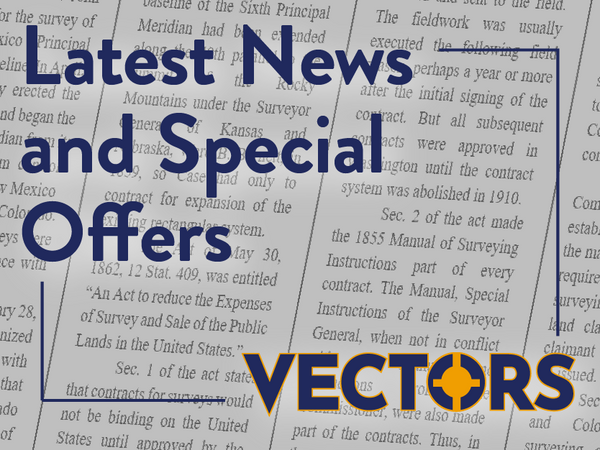
By Dustin Hoaglin
Southwest Regional Manager at Vectors Inc.
MADE TO MEASURE NEWS | VECTORSEDU | January 2022
Modern Survey Departments
Are Facing a Challenge
In the US today, the average age of a surveyor is over 55 years of age. This means that within the next fifteen years many surveyors are going to retire, and we may see this even sooner with the impacts of COVID 19.
The average American erroneously views surveying as a trade. This misconception makes it difficult to encourage students to pursue careers in surveying. In other countries, surveying is held in much higher regard.
With declining numbers of students graduating from land surveying programs, there is a strong possibility that the current shortage of surveying professionals is going to worsen.
But you may be surprised to find that this increasing shortage of surveyors is perhaps not the worst impact on the profession.
Traditionally land surveying is an apprentice - > journeyman - > master-based profession. Although modern licensed surveying professionals attend many years of school and typically must pass the NCEES Fundamentals of Surveying (FS) exam and the NCEES Principles and Practice of Surveying (PS) exam along with a state-specific exam, learning from co-workers in the field is where true education is obtained.
Knowledge Transfer Is Vital

The transfer of knowledge in the land surveying profession has always been difficult, but today it is even more so.
User acery88 on Reddit explains:
In 2008, survey companies were forced to lay off the inexperienced and typically younger field workers while holding onto more experienced field personnel. One-man crews kept companies afloat during the housing bust and the following recession.
In 2012 as the recession ended, companies reached back out to those younger field workers that had been laid off only to find out that they had moved on. Being once burned by the surveying profession, many found gainful employment in other industries. Companies found that a lot of them had no desire to return. This forced the industry to start over and hire a new, fresh group of young talent and start the training process over.
This Has Created Widening
Of The Historic Knowledge Gap
As we move forward from 2012, those more experienced field personnel of the 2008 to 2012 era become ready for career advancement. They are naturally moving into more office positions processing data or managing crews. At the same time, the old-timers long in the tooth or grey in the beard are retiring or have passed on.
The wise old sages with meaningful educational experiences have become harder and harder to find, and their wisdom has gone with them.
You Don’t Know
What You Don’t Know
Modern surveying equipment has continued to perform more and more of the math for us, enabling us to work faster and more effectively as one-man crews. The result is that many companies’ young field staff are unaware of their ignorance and have no starting point to create deeper questions to start the conversation.
Modern field staff attempt to figure things out on their own. They may feel like they have gaps in knowledge of how the equipment works or why performing a workflow one way today is fine, but the next day should be different. This is where we find ourselves.
New technological advancements offer exciting opportunities for the young surveyor to extend beyond traditional surveying activities. Companies embracing and adopting these new technologies will expand their operations.

But the greatest challenge is to create programs accessible to the still developing, often younger, field personnel. Below is a shortlist of topics that could be helpful for your younger staff members to explore.
Can the industry create after-work programs, utilize YouTube and web content, and embrace social media as an easily accessible way to transfer knowledge to this generation of surveyors?
Will this next generation
of Surveyors step up?
I hope so.
- Study the history of the surveying profession.
- Study the evolution of surveying equipment.
- Learn about and understand old surveying techniques.
- Learn the math!
- Check yourself multiple ways. Be prepared to prove yourself correct before someone questions the data.
- There are errors in every measurement. What is the difference between accuracy and precision?
- How much error can you have on this project?
- Test your ideas. Understand the scientific method.
- Ask questions as you encounter things and expand your knowledge base.
Dustin Hoaglin is a Trimble Certified Trainer, Regional Manager, and TBC Power User for Vectors Inc. and is based in Albuquerque, New Mexico.
©Vectors Inc.


